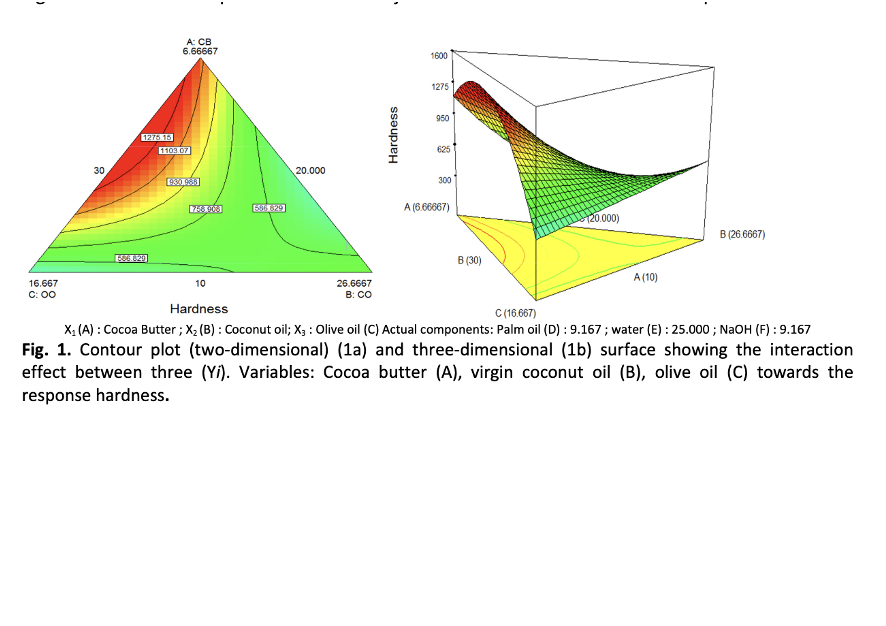Optimization of Moisturizing Clay Soap Containing Pitaya (Hylocereus polyrhizus) Seed Extract using D-Optimal Mixture Experimental Design
Keywords:
Pitaya, mixture design , saponification , clayAbstract
Pitaya seed oil, extracted from red pitaya seeds, was utilized as a major antioxidant source in soap formulation for skin application. Bentonite (grey clay powder) with various beneficial properties also was incorporated in the formulation to enhance the positive effect toward skin’s structure. The influence of the main compositions of soap formulation containing different fatty acid and oils (cocoa butter, virgin coconut oil, olive oil, palm oil) on the hardness of the soap that undergoes saponification process was investigated by employing D-optimal mixture experimental design. Analysis of variance (ANOVA) was carried out and the polynomial regression for prepared soap hardness in terms of the six design factors was developed by utilizing the experimental data. Results revealed that the best soap formulation included 9.027% A, 29.098% B, 19.588% C, 9.223% D, 23.860% E and 9.204% F. The results showed that the hardness of the soap was greatly affected by the different in the level of fatty acid and oils in the formulation. Depending on the appropriate level of those six variables, the production of moisturizing clay soap containing pitaya seed extract with the most desirable properties which is much better than those of commercial ones is possible.
Downloads




























